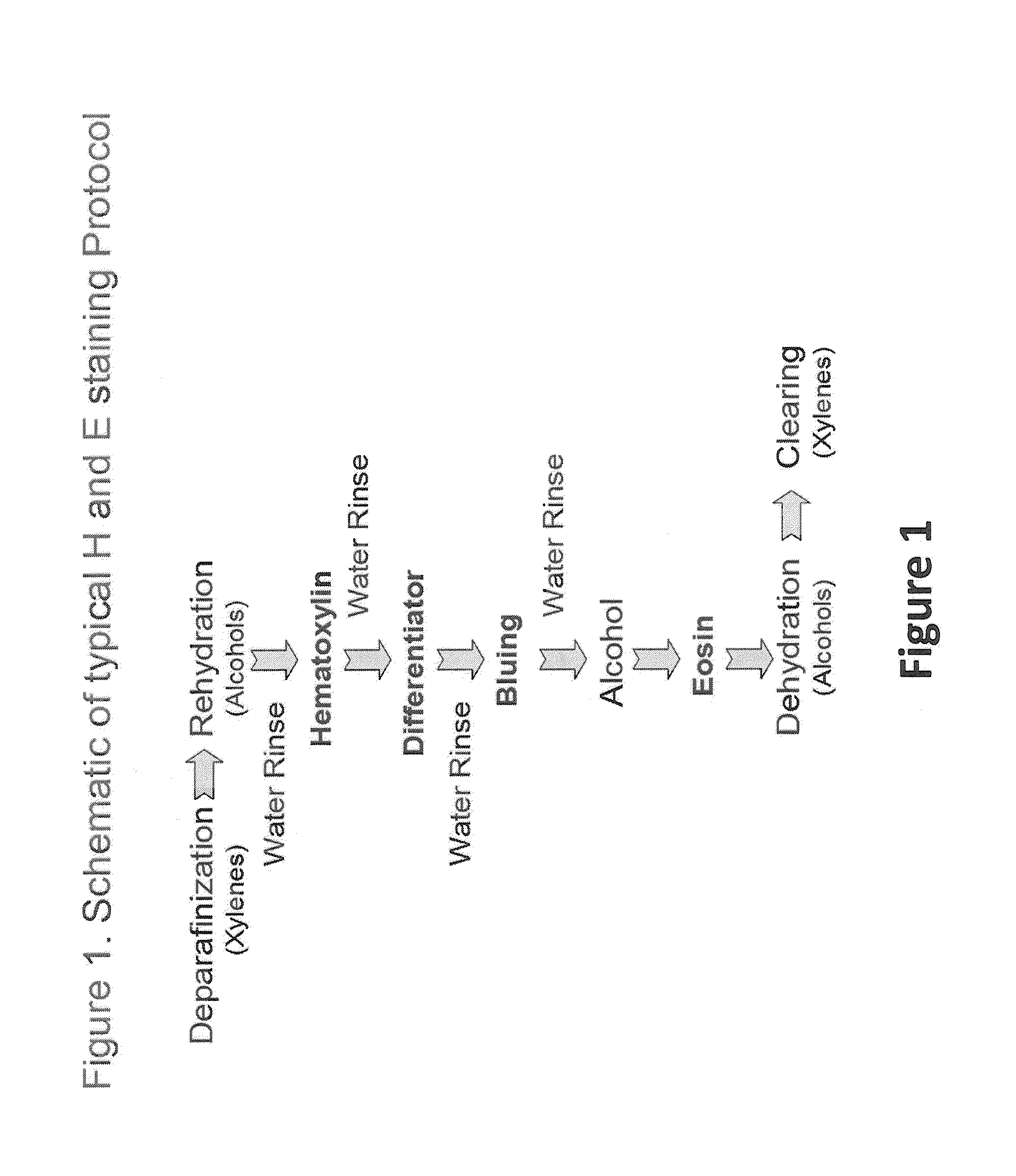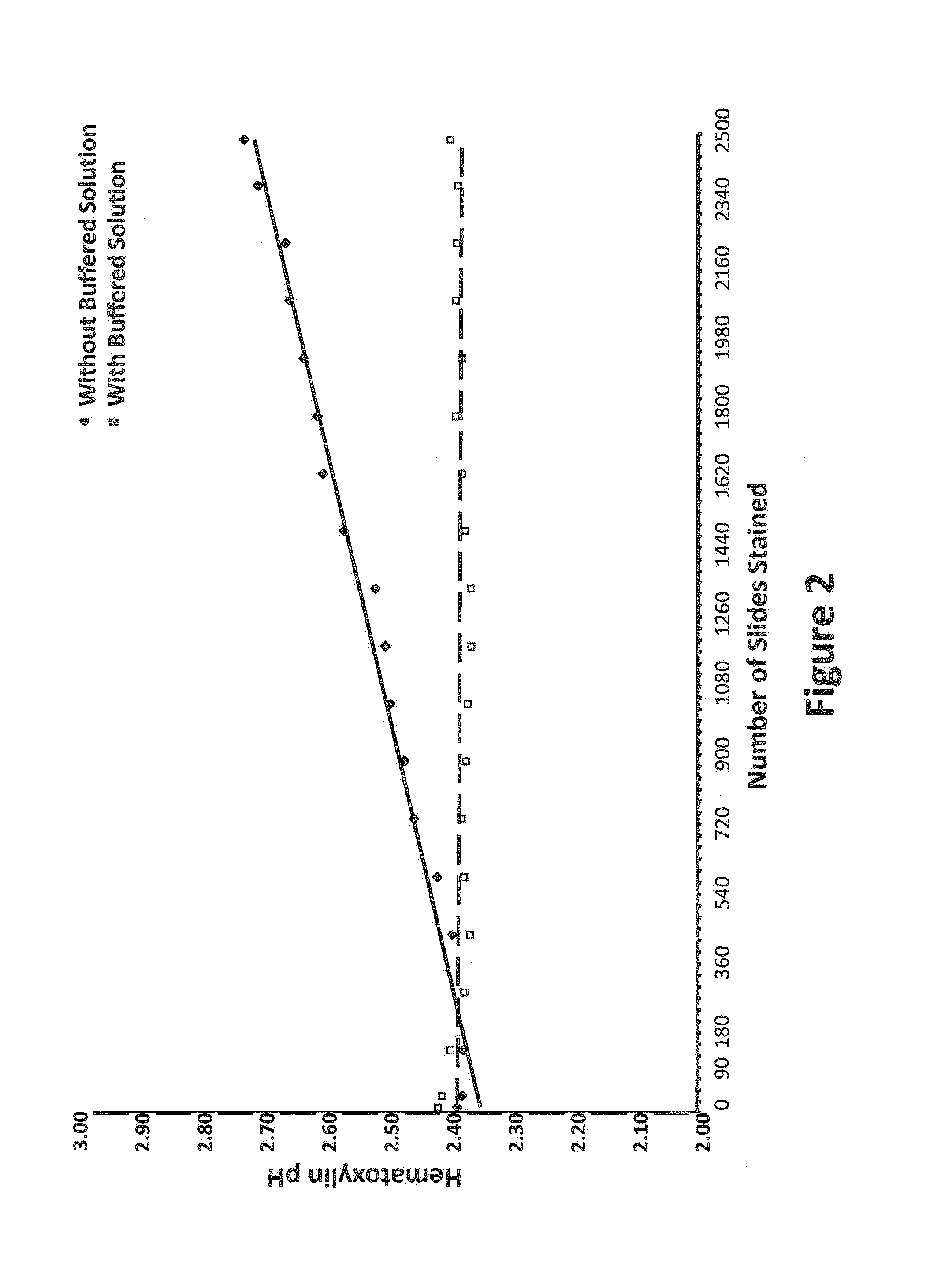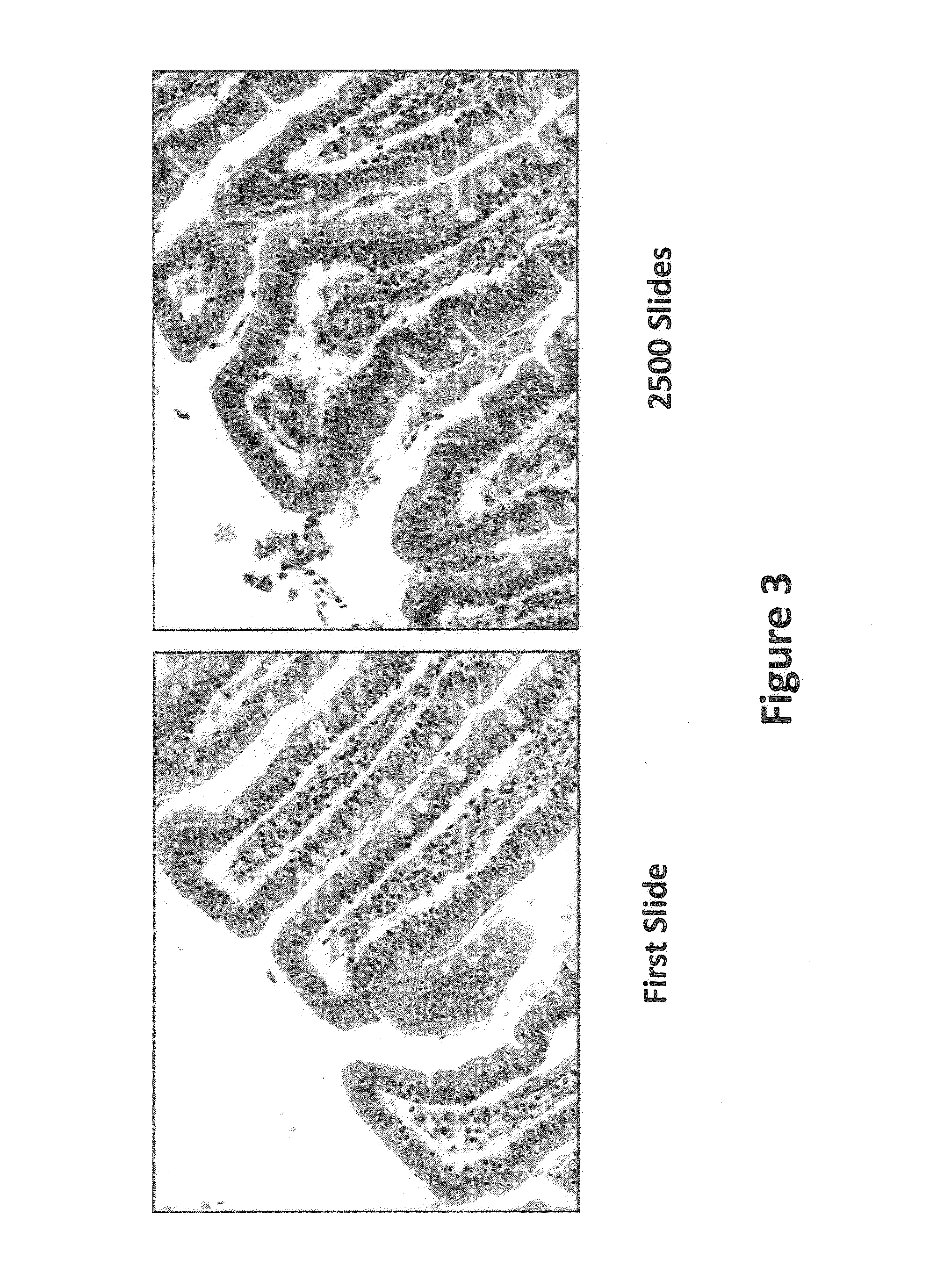[0039]In an H and E staining system, the detrimental effects of carry-over are greatest on the hematoxylin and differentiator solutions, but may affect all stains / reagents in a staining system. Hematoxylin and the differentiator follow water rinses in a typical H and E staining schedule. The performance of these two solutions is highly dependent upon pH and the introduction of water to these solutions results in an increase in pH. One effect of increased pH on these solutions is an increase in the background staining of hematoxylin. In certain embodiments, a sample is contacted with a defined solution immediately before being contacted with a hematoxylin staining solution. In certain embodiments, the sample is contacted with a defined solution immediately after being rinsed in water and immediately before being contacted with a hematoxylin staining solution. In certain embodiments, the pH of the hematoxylin solution will increase less than 0.30 pH units when exposed to a buffered solution carried over from prior immersion of the specimen in the buffered solution. In certain embodiments, the pH of the hematoxylin solution will increase less than 0.20 pH units when exposed to a buffered solution carried over from prior immersion of the specimen in the buffered solution. It is understood that not only will the pH of the hematoxylin solution increase less than 0.30 pH units, or less than 0.2 pH units, when exposed to a buffered solution carried over from prior immersion of the specimen in the buffered solution when carrying out the steps of the method once, but that a particular advantage of the inventions is that the pH of hematoxylin solution will not increase after repeated exposures to carryover of the buffered solution.
[0040]In certain embodiments, a sample is contacted with a defined solution immediately before being contacted with a differentiator solution. In certain embodiments, the sample is contacted with a defined solution immediately after being rinsed with water and immediately before being contacted with a differentiator solution.
[0041]Use of the described methods may allow for up to 2,000 standard specimen slides to be processed under standard H and E staining procedures before new reagents are substituted. In certain embodiments, use of the methods may allow for up to 2,700 slides to be processed before new reagents are substituted. Further, in certain embodiments, use of the methods may allow for up to 3,000 slides to be processed before new reagents are substituted. It is understood by those of skill in the art that the capacity to process a certain number of specimen slides refers to the capacity to process such a number without observing an adverse effect on staining that would be unacceptable for the purpose for which the slides are being stained. It is further contemplated that use of the reagents and methods of the invention used in combination with mechanical methods that reduce, but do not completely eliminate carry-over, will also significantly enhance the number of slides that may be stained using a given set of reagents.
[0042]Methods of the invention may also include the step of diluting a concentrated solution, such as diluting with water, to a final working strength or ready-to-use defined solution. Methods of the invention may also include the step of adding a component, such as an antimicrobial, to prepare a ready-to-use defined solution. This step would be performed before using the defined solution in an H and E staining protocol.VI. Kits and Methods of Use
[0043]One aspect of the present invention is drawn to kits for performing H and E staining. Such kits comprise at least a defined solution that mitigates the effects of solution carry-over. Useful defined solutions are described in detail in this application and include buffered and unbuffered solutions. Representative kits of the invention may also comprise one or more staining reagents or other components used for H and E staining. Examples of staining reagents used for H and E staining include hematoxylin solution, eosin solution, a differentiating solution, and a bluing agent solution. Examples of other components used for H and E staining include xylenes, xylene substitutes, and alcohols. In certain embodiments, the kit comprises at least the five reagents: (1) hematoxylin solution, (2) eosin solution, (3) a differentiating solution, (4) a bluing agent solution, and (5) a defined solution that mitigates the effects of solution carry-over.
[0044]Another aspect of the invention is drawn to methods of using a kit for performing H and E staining. The procedure for performing the H and E staining includes using a defined solution that mitigates the effects of carry-over as described in detail in this application. The use of a kit provides numerous benefits. Current H and E staining procedures and reagents are subject to the negative effects of solution carry-over, often necessitating that the solutions be changed at different rates. The inclusion of a defined solution that mitigates the effects of solution carry-over in a kit provides for a predictable lifespan of all the kit reagents that is consistent, such that the kit reagents require changing at the same time. For example, use of the kit reagents may allow for up to 2,000 standard specimen slides to be processed using standard H and E staining procedures before new reagents are substituted. Or use of the kit may allow for up to 2,700 slides to be processed before new reagents are substituted. Or use of the kit may allow for up to 3,000 slides to be processed before new reagents are substituted.EXAMPLES
 Login to View More
Login to View More 


